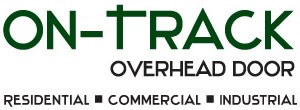Even if a tenant sublets a property, the original tenant is still responsible for the obligations set out in the lease, such as . B the monthly payment of rent. Here are some examples of what is included in subletting: Before a tenant can facilitate a sublet, they must obtain permission from their landlord and any other escrow to do so. Tenants should review the original lease they signed to determine whether subletting is permitted in their contract and, if so, what steps they should take to obtain permission from their landlord to sublet. After purchasing, open the form and check it. The first task defined here is to present the explanation in the first article (called “I. The Parties”). Identify this Agreement by attaching a specific date to this document and to the parties involved. Specify the month and day of this date in the first empty row and the corresponding year in the second blank row. A crucial point that needs to be solidified in this agreement is the exact amount of money expected as rent from the aforementioned submaster.
The third article of this agreement states: “III. Rent” there is the possibility to present the rent. Find the blank line between the term “. This sublease is supposed to be $” and the phrase “Payable on… Then enter the rental amount that the subtenant must pay to the subtenant each month in exchange for the use of the premises defined in the first article. For a sublet to be successful, it must be highly detailed and comprehensive to the expectations of the tenant and the original owner of the property. Ensuring that all the information a subtenant needs is included in the sublease agreement can also avoid litigation in the future, as subletting is used to determine the legal process that tenants, landlords, and original subtenants can pursue. In the event that the payment of rent is delayed, there is a risk. In some agreements, the subtenant pays rent to the original tenant.
If the original tenant does not provide this money to the landlord, the subtenant could be evicted even if they made their payments on time. The next section that asks for comments is “XVII. Applicable law”. The explanation presented here results in a blank line that requires the name of the state whose laws may impose judgments to enforce or cancel this sublease agreement. This agreement must also include some basic facts about premises that do not necessarily require direct access. As a result, several multiple-choice practice areas are used to define certain provisions. Start with the sixth article, “VI. Move-in checklist”, where one of the two checkbox statements must be selected. If a “move-in checklist” is to be completed to document defects or damages on the property on the first day of the subtenant`s lease term, check the box that corresponds to the words “Must be required.” If the subtenant and subtenant have agreed that a “move-in checklist” does not have to be completed on the first day of the sublease period, check the “Should not be required” box. It should be noted that this is generally considered unwise, as such a checklist serves to protect one of the parties from misunderstandings or harassment by the other party.
The sub-lessor named in the first article must review this concluded agreement and then refer to the final article “XX. Entire Agreement”. If the subtenant agrees to comply with the contents of these documents, he must sign the blank signature “Signature of the subtenant”, then indicate the current month, day and year in the line entitled “Date”. In addition to the signature provided, the sublease must print their name on the following line below (“Printed Name”) to prove their identity as a subsor of this agreement. Subletting is the leasing of real estate by a tenant to a third party for part of the tenant`s existing lease. Here is a simple 6-step process that allows you to write a sublet: A sublet exists between a tenant, also called a “subtenant”, and a person who wants to rent the same space, the “subtenant”. .
